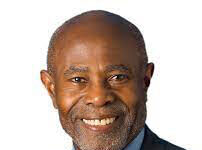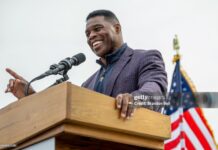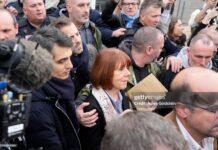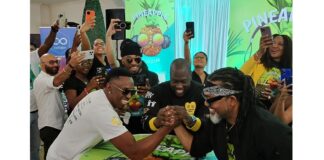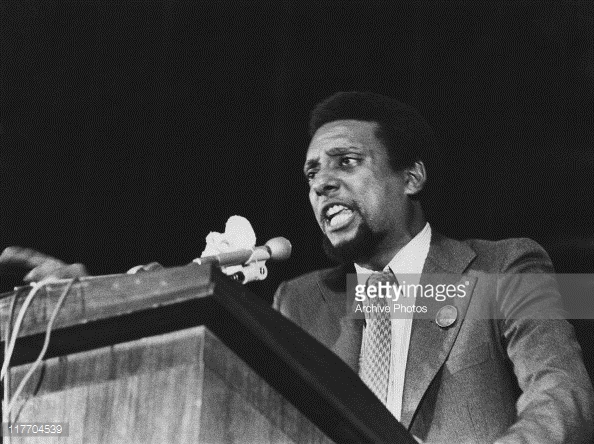
By NAN Staff Writer
News Americas, NEW YORK, NY, Weds. Feb. 8, 2017: As the US continues to mark Black History Month, here are 8 West Indian black immigrants who made a significant contribution to black history in the United States, but who today remain largely forgotten.
1: Kwame Ture/Stokely Carmichael
Trinidad-born Stokely Carmichael, who later changed his name to Kwame Ture, was a prominent figure in the black US struggle for civil rights and in the global Pan-African movement. He migrated to the United States at age of 11 and became an activist while he attended Howard University. Ture later became active in the Black Power movement, first as a leader of the Student Nonviolent Coordinating Committee (SNCC) and later as the “Honorary Prime Minister” of the Black Panther Party (BPP), and finally as a leader of the All-African People’s Revolutionary Party (A-APRP).
2: Hubert Harrison
Hubert Harrison moved from his native St. Croix-born to Harlem, NY at age 17. He became a writer, orator, educator, critic, and race and class conscious political activist and radical internationalist who was described by activist A. Philip Randolph as “the father of Harlem radicalism” and by the historian Joel Augustus Rogers as “the foremost Afro-American intellect of his time.” John G. Jackson of American Atheists described him as “The Black Socrates.” In 1912-14 he was the leading Black organizer in the Socialist Party of America. In 1917 he founded the Liberty League and The Voice, the first organization and the first newspaper of the race-conscious “New Negro” movement. From his Liberty League and Voice came the core leadership of individuals and race-conscious program of the Garvey movement.
3: Cyril Briggs
Cyril Valentine Briggs was born in Nevis, West Indies and immigrated to the United States in July 1905 to join his mother, who had already migrated here. Briggs’ first American writing job came in 1912 at the Amsterdam News. In 1917, Briggs founded the African Blood Brotherhood (ABB), one of the seminal groups of African-American associations. His goal was to stop lynching and racial discrimination, and ensure voting and civil rights for African Americans in the South. He also called for black self-determination. The group initially opposed American involvement in the First World War. He later founded The Crusader, a seminal New York magazine of the New Negro Movement of the 1920s dedicated to advancing the cause of Pan-Africanism.
4: Richard Benjamin Moore
Richard Benjamin Moore was born in Barbados and moved to the US at around age 9. Moore faced ethnic discrimination when it came to employment and educational opportunities among other things and due to the struggles he encountered and observed, became a strong vocalist for the rights of African-Americans. In 1919 Moore joined the African Blood Brotherhood (ABB) which was an organization formed to defend African Americans from race riots and lynching. Moore, along with other African-American advocates, joined the Socialist Party in the early 1920s. Moore was a frequent political candidate of the Socialist Party. In 1928 he ran for U.S. Congress in New York’s 21st Congressional District. In 1935, he became the organizer for the International Labor Defense in the New England Territory. He used his position in this organisation to speak on behalf the Scottsboro Boys, a case in which nine young African American males were accused of raping two young European-American women. He was also one of the earlier advocates of the term African American as opposed to Negro, or “black.”
5: George Padmore
George Padmore was born Malcolm Ivan Meredith Nurse in Trinidad. He left Trinidad in 1924 to study medicine at Fisk University, a historically black college in Tennessee in the United States, where he also joined the Communist Party. During his college years, Nurse became involved with the Workers (Communist) Party. When engaged in party business, he adopted the name George Padmore (compounding the Christian name of his father-in-law, Constabulary Sergeant-Major George Semper, and the surname of the friend who had been his best man, Errol Padmore. Padmore officially joined the Communist Party in 1927 (when he was in Washington, DC) and was active in its mass organization targeted to black Americans, the American Negro Labor Congress. In March 1929 he was a fraternal (non-voting) delegate to the 6th National Convention of the CPUSA, held in New York City. He continued to support socialism and was a leading Pan-Africanist, journalist and author.
6: Frank R. Crosswaith
Frank Rudolph Crosswaith was born in Frederiksted, St. Croix, USVI and emigrated to the United States in his teens. Crosswaith went on to found an organization called the Trade Union Committee for Organizing Negro Workers in 1925, but this work went by the wayside when he accepted a position as an organizer for the fledgling Brotherhood of Sleeping Car Porters. Crosswaith maintained a long association with union head A. Philip Randolph, serving with him as officers of the Negro Labor Committee in the 1930s and 1940s. In the early 1930s Crosswaith worked as an organizer for the International Ladies’ Garment Workers’ Union, which became one of the major supporters of the Negro Labor Committee. In 1924, he ran on the Socialist ticket for Secretary of State of New York, and in 1936 for Congressman-at-large. He ran also for the New York City Council in 1939 on the American Labor ticket. Crosswaith was elected to the governing executive committee of the American Labor Party in New York in 1924. Crosswaith also worked with A. Philip Randolph during World War II in organizing the March on Washington Movement, which was called off when President Franklin D. Roosevelt agreed to sign Executive Order 8802, which prohibited racial discrimination in defense industries.
7: Reverend Ethred Brown
Reverend Ethred Brown was born in Falmouth, Jamaica and started a Unitarian church in Jamaica. He arrived in the United States in September 1910 and began his studies at the Unitarian Theological School in Meadville, Pennsylvania. Ethelred Brown was ordained a Unitarian minister in 1912 as the first black Unitarian minister. He returned with his family to New York in 1920 and started the Harlem Community Church that same year and served as minister for 35 years. Brown went on to He He Gfound the Jamaican Progressive League (JPL) in New York City in 1936
8: Hermina Huiswoud
Hermina (Hermie) Dumont Huiswoud was born in British Guiana (now Guyana), and migrated to New York in 1919. In 1926 she married Otto Eduard Huiswoud who was born in Dutch Guiana (now Suriname) and a charter member of the Communist Party of the United States of America, also active in international communist activities, including heading the Profinterns International Trade Union Committee of Negro Workers, and edited their publication, The Negro Worker, under the name Charles Woodson. As the wife of Otto Huiswoud, Hermina accompanied him to Moscow, Paris, Antwerp and Amsterdam, where she settled in 1949, and actively participated in activities associated with the Left, and wrote articles for radical publications. Langston Hughes was one of her friends and correspondents.






